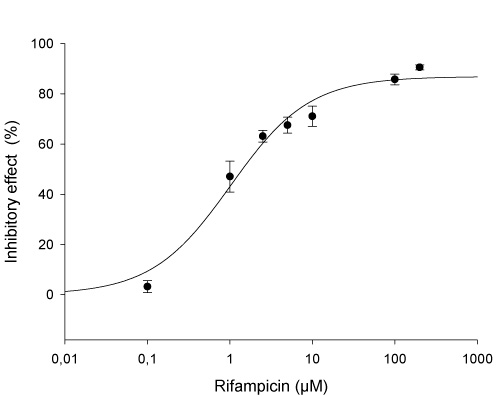hOATP1B1 (SLCO1B1)
➦ Human organic anion transporting polypeptide OATP1B1 (previously known as OATP-C) is highly expressed in liver where it is localized to the basolateral membrane of the hepatocytes. OATP1B1 mediates the uptake of many different drugs from blood into hepatocytes. Endogenous compounds that are transported by OATP1B1 are bile salts like taurocholate but also estrone-3-sulfate which is used as model substrate. For some drugs it seems that a genetic variation (521T>C; V174A) is associated with an altered pharmacokinetic. Clinical relevance and Drug-Drug Interaction (DDI) to hepatic uptake have been noted for OATP1B1. Therefore, the regulatory agencies decided that drugs eliminated significantly via the liver have to be tested as potential inhibitors (substrates) for hOATP1B1.
| Main localization: | Liver |
| Transporter assay: | Uptake transporter assay (potential inhibitors or substrates) |
| Probe substrates: | Estrone-3-sulfate (ES) |
| Probe inhibitors: | Rifampicin, cyclosporine, ketoconazole |
| Regulatory relevance: | FDA and EMA guidance |
| Important interacting drugs: | Fluvastatin, methotrexate, ochratoxin A, olmesartan, pitavastatin, pravastatin, rosuvastatin, rifampicin, valsartan, cyclosporine, ketoconazole, digoxin, MK-571 |
➦ Concentration dependent inhibition of hOATP1B1-mediated 3H-ES uptake by the probe inhibitor rifampicin


